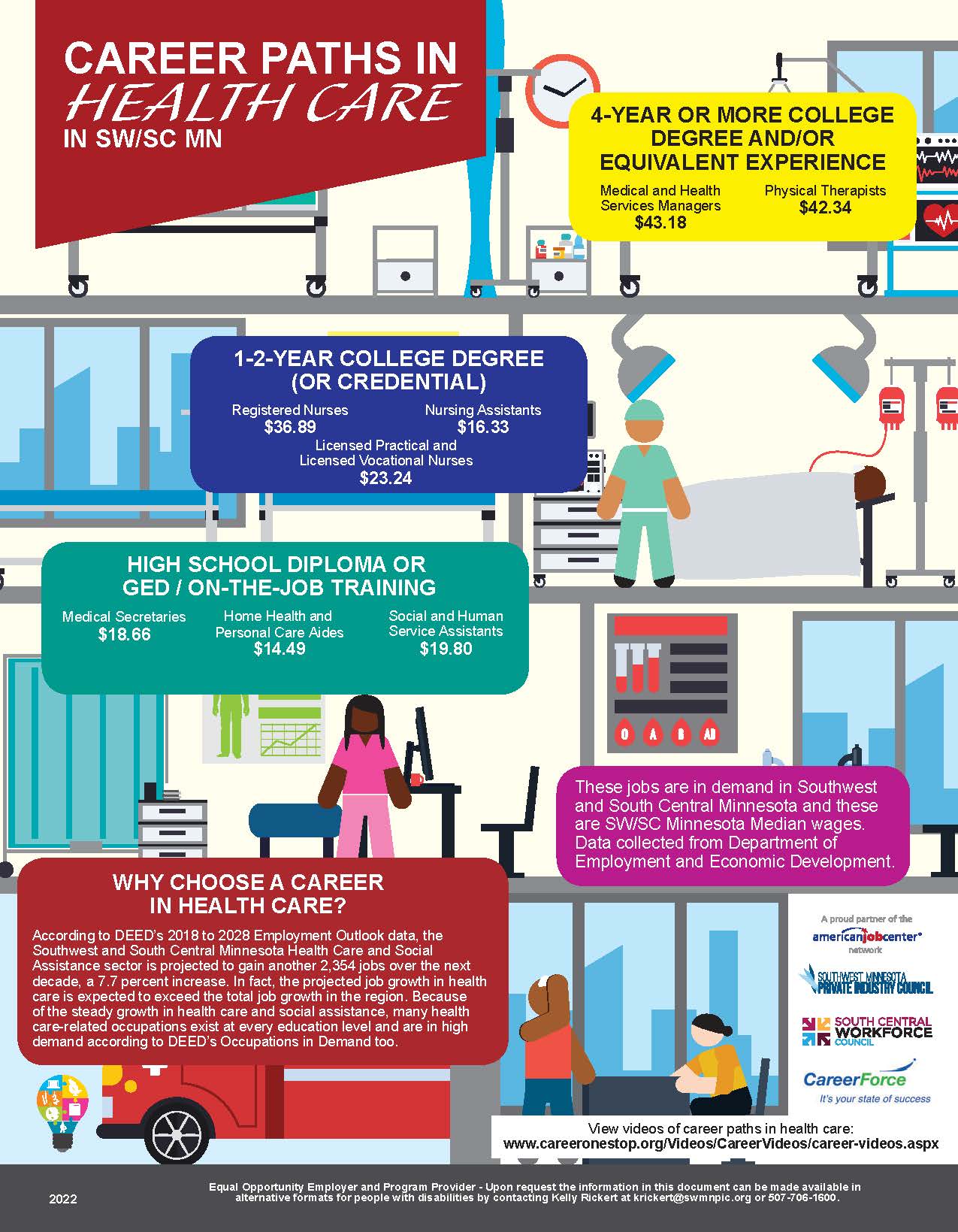Healthcare regional labor market information
Despite economic fluctuations in the region across other industries, health care and social assistance providers in Southwest Minnesota have continually added jobs over the past 17 years.
The Health Care and Social Assistance industry is female-dominated, with women holding 81% of jobs in Southwest Minnesota. However, the number of jobs held by men increased 19% over the past 10 years. There are several Non-Traditional Healthcare Careers for men, including CNA’s, LPN’s, RN’s, and NP’s. A Non-Traditional Healthcare Career for women are Chiropractors, whose median annual wage is $56,368.
The job growth is expected to be largest and fastest in home health care services, which may grow nearly 50 percent, or 719 additional jobs. Job growth at nursing and residential care facilities is expected to be split between community care and assisted living facilities for the elderly, which may gain almost 450 jobs, and residential mental health facilities, which could add about 650 new jobs. In contrast, the region is expected to lose jobs at nursing care facilities and other residential care facilities. Hospitals are projected to see about 2 percent growth, adding just 179 jobs from 2014 to 2024, primarily at privately-owned hospitals, compared to losses at government-owned hospitals.
Because of the steady growth in health care and social assistance, many health care-related occupations exist at every education level and are in high demand according to DEED’s Occupations in Demand too. Although the highest paying occupations tend to have the highest educational every education level and are in high demand according to DEED’s Occupations in Demand too. Although the highest paying occupations tend to have the highest educational requirements, there are exceptions to the rule. According to DEED’s Educational Requirements for Occupations data, Healthcare social workers require a master’s degree, but are earning $21.42 per hour at the median in Southwest Minnesota; while radiologic technologists require just an associate’s degree but pay above $28 an hour at the median.
According to DEED’s 2014 to 2024 Employment Outlook data, the Southwest Minnesota health care and social assistance sector is projected to gain another 3,100 jobs over the next decade, a 10.4 percent increase. That is much faster than the projected growth rate in the region, which is expected to grow just 1.0 percent across all industries. In fact, the projected job growth in health care is expected to exceed the total job growth in the region.


